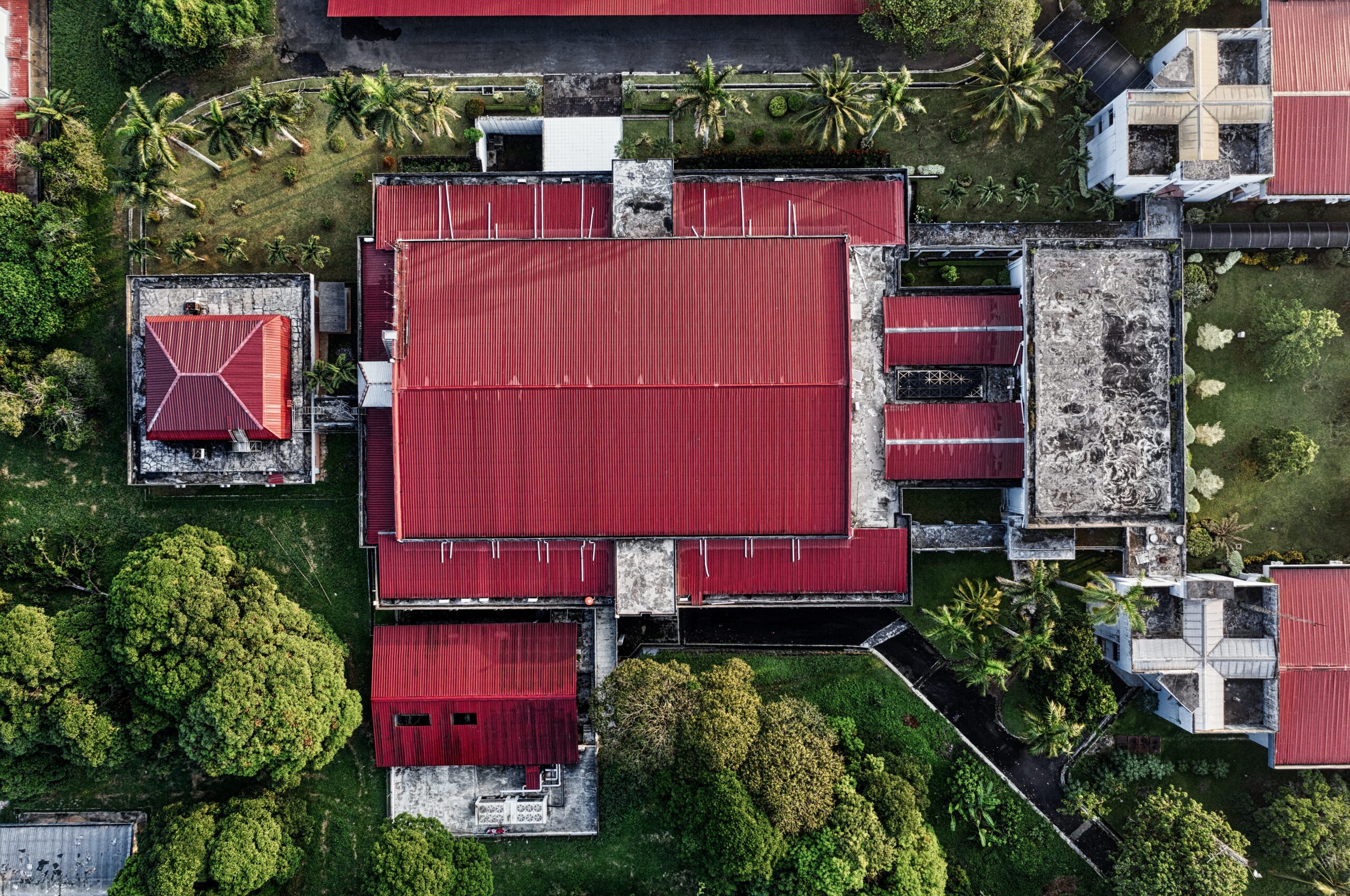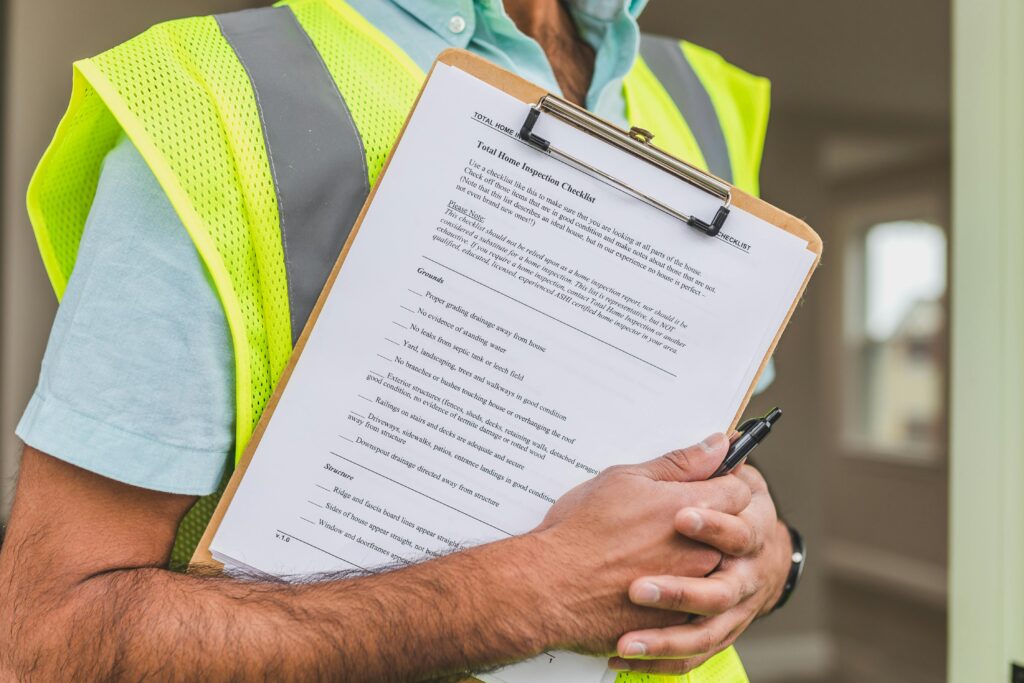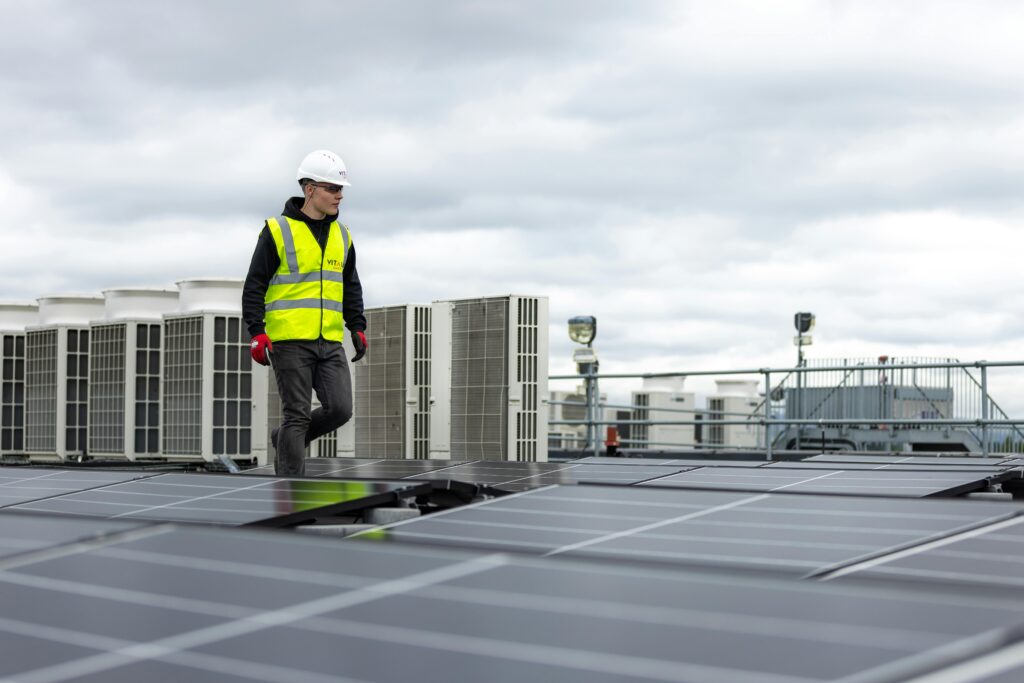When you need a commercial roof replacement, understanding the process and what to expect can make for a smooth and successful project.
In this article, we’ll explore the various stages of a commercial roof replacement, from preparation to final inspection, including selecting the right roofing material and contractor. We’ll also discuss the process of replacing the roof, including removing the old material and installing the new one.
Lastly, we’ll explore how you can ensure longevity for your new roofing system to maximize your investment. By knowing what to expect during a commercial roof replacement, you’ll be well-equipped to make informed decisions throughout the entire project.
1. Preparation for a Commercial Roof Replacement
Before diving into the actual process of a commercial roof replacement, it’s crucial to understand the scope of the project and prepare accordingly. This involves working with a commercial roofing contractor to create a plan for debris removal, review safety protocols, and ensure all parties involved are on the same page.
Understanding the Scope of Your Project
The first step in preparing for your commercial roof replacement is to have a clear understanding of what needs to be done. Your local commercial roofing professional will evaluate the state of your roofing system, help you choose the best materials for the new roof, and put together a timeline so you understand how long the process will take and how it could impact your business operations.
Debris Removal Plan
During any commercial roof replacement project, waste will be generated from the removal of old materials. It’s essential to create a plan for disposing of this debris properly while minimizing disruption at your business as much as possible. Your roofing contractor will do this by:
- Determining where dumpsters or disposal containers should be placed on-site.
- Creating designated areas for workers to collect debris during work hours.
- Scheduling regular pick-ups by waste management companies throughout the project.
Reviewing Safety Protocols
Safety is paramount when undertaking any construction project–especially one as critical as replacing your building’s roof. You should choose an experienced commercial roofer who is well-versed in the latest industry standards and ensures all roofers working on-site understand their responsibilities regarding safety measures such as:
- Fall protection systems
- Ladder usage guidelines
- Proper use of personal protective equipment (PPE)
Preparation for a commercial roof replacement is an essential step in ensuring the longevity of your building’s roof. Thorough research and planning can help guarantee that your roof will last as long as possible.
Key Takeaway:
Before starting a commercial roof replacement project, it’s important to understand what to expect and make necessary preparations. Consulting with an experienced roofing contractor will help you take these steps before beginning a roof replacement to ensure an efficient and successful process.
2. Replacing the Roof
During a commercial roof replacement, there are several steps to ensure a successful installation and long-lasting results. The process begins with removing existing roofing materials, followed by inspecting the decking for any damage. Next, new roofing materials are installed and sealed properly to prevent leaks and other common damage over time.
Removing Existing Roofing Materials
The first step in replacing your commercial roof is removing all the old roofing materials. Your commercial roofer will remove the previous material as well as any tar paper, insulation layers, and flashing. It’s essential that this step is done carefully to avoid damaging the underlying structure.
Inspecting Decking
Once the roofers have removed the old roofing materials, it’s time for an inspection. Your commercial roofing contractor will carefully examine the decking to identify areas where water has infiltrated the deck material or caused rotting wood that needs repair. Any damaged sections should be replaced as needed during this stage of the project before the installation of new materials begins.
New Roof Installation
The actual installation process of your new roofing material requires:
- Felt Underlayment: Installing a layer of felt underlayment helps protect your building from moisture infiltration while providing additional support for your new roofing material.
- Rooftop Insulation: Properly insulating your rooftop helps reduce energy costs by keeping heat inside during colder months and reflecting sunlight in warmer seasons.
- Roofing Material: Depending on your building’s needs and budget, there are various commercial roofing materials to choose from, such as metal panels, single-ply membranes (like TPO or EPDM), or built-up roofing. Your roofer can help you determine the best choice for your specific building.
Sealing Seams and Joints
To ensure your new roof is watertight and secure against leaks, your roofer will properly seal all seams between different sections of material. This can be done using specialized tapes or adhesives designed specifically for commercial roofing applications. Additionally, any joints where flashing meets the roof surface should also be sealed with appropriate caulking products.
Key Takeaway:
During a commercial roof replacement, your roofer will remove the old roofing material and inspect the decking for any damage. The new roofing material, along with insulation and decking protection, will be installed properly to prevent leaks. Sealing all seams and joints with specialized tapes or adhesives is crucial to ensure the new roof is watertight and secure against leaks.
3. Finishing Touches
Once the new roof has been installed, there are a few steps your commercial roofing contractor will take to ensure the roof has been installed properly.
Inspect Flashing
The first step in this process is to inspect all flashing. Flashing refers to thin pieces of metal or other materials used at joints, seams, and edges of roofs to prevent water infiltration. These areas must be properly sealed and secured so they don’t become weak points for leaks or damage during inclement weather.
Apply Coatings or Sealants as Needed
If required by your specific roofing system, your roofing contractor will apply coatings or sealants during this stage. Coatings or sealants can provide further protection against moisture, UV rays, and other external factors that could cause damage to the roof over time. For example, many flat roofs benefit from an application of reflective coating, which helps reduce energy costs by reflecting sunlight away from the building.
Clean Up Debris from the Job Site
The final step in a commercial roof replacement is to clean up any debris left behind during the project. A professional roofing contractor will ensure all debris is properly disposed of according to local regulations.
4. Final Inspection
The final inspection is a crucial step in the commercial roof replacement process, as it ensures that your new roof has been installed correctly. During this stage, both the roofing contractor and the property owner should be present to thoroughly inspect the completed work.
Checking for Potential Issues
During the final inspection, your commercial roofer will look for potential issues with your newly installed roof. These may include:
- Missing or damaged shingles
- Poorly sealed seams or joints
- Inadequate flashing around vents, skylights, and other penetrations
- Sagging areas that could indicate structural problems with decking or support beams
- Improper installation of insulation materials beneath roofing layers (if applicable)
If any issues are discovered during the final inspection, your roofing contractor will address them before considering the job complete. It’s essential to have open communication with your contractor throughout this process so you can be confident in the quality of their work and know that your new commercial roof will provide high performance, durability, and longevity for your business.
Key Takeaway:
The final inspection is a crucial step in the commercial roof replacement process, ensuring the new roof has been installed correctly. During this stage, your commercial roofer will check for potential issues with the new roof. If any problems are discovered, your roofing contractor will address them before considering the job done.
Conclusion
Getting your commercial roofing system replaced is a big job, but working with an experienced contractor ensures minimal disruption to your business and a job well done. CDS Roofing has over four decades of experience delivering premier roofing solutions for businesses, so you can trust us for your commercial roof replacement project. Schedule an appointment with us today to get started!




